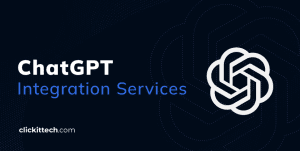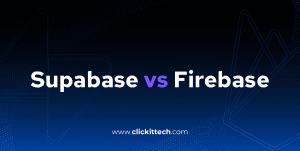Nowadays, every digital company is looking to be at the leading edge of technology, and one way to achieve it is by changing the way they design and use applications; hence, it is important to get immersed into the best practices to build a Cloud Native Application.
In this blog, we’ll discuss the top four best practices to ensure your Cloud Native Architecture is scalable, secure, and resilient. Let’s go!
- Adopting Modern Architectures
- Using Cloud APIs
- Building Resilient Applications
- Implementing DevOps Automation
- Conclusion
- FAQs
Adopting Modern Architectures
Choosing modern architectures for cloud-native applications means creating systems built to leverage the dynamic, scalable nature of the cloud. The app modernization approach focuses on designing resilient, flexible applications that can easily adapt to changing demands.
It emphasizes the use of modular, loosely coupled components that allow for continuous integration, delivery, and updates without disrupting the entire system.
One fundamental practice for app modernization consists of adopting the 12-factor methodology, which is a methodology to build modern, scalable, and resilient SaaS applications for any programming language.
Some of the components are dependency isolation, portability, CI/CD, source control versioning, parity or environment parity, and more bits.
Using Cloud APIs
Essentially, Cloud APIs have the ability to communicate across different cloud environments utilizing the same API protocol to share information and data coming from the customer or going to the customer, like Open Banking, whose core premise is to incorporate secure API across different financial service providers.
Even for Kubernetes, its main premise is to build an API in front of the cluster on all the Kubernetes platforms.
Another component from this section is to utilize SaaS or fully managed services like Amazon RDS, MongoDB, DynamoDB, Amazon SES, MongoDB Atlas, or any other service that help you develop faster.
Building Resilient Applications
In brief, is the adoption of microservices, light, and portable containers, loosely coupled architectures with Docker and how to manage microservices and containers. In this case, it would be Kubernetes, AWS ECS, or even Fargate.
Alternatively, you could adopt the serverless ecosystem, which is the highest abstraction level in the Cloud.
Implementing DevOps Automation
Automating repetitive tasks is fundamental in cloud native development. And Infrastructure as Code is great in helping teams achieve it. This infrastructure business logic needs to live in the source control version system like Git or Bitbucket.
Another relevant point is that the infrastructure should be immutable, meaning that your infrastructure shouldn’t change after getting deployed if it needs some modification, needs to be done before the deployment, or provisioning the infrastructure from images, scripting, templates, or anything else. But if you need to change something on the fly, you need to follow a process that brings a lot of consistency and portability and is good for disaster recovery.
Finally, a key tenet is that your application should be stateless; this is a modern approach where your application shouldn’t save data locally, in your container or hard drive, or even in your virtual machine. Instead, you should save the data in cloud storage, in backed services like databases, caching systems, or even in cloud storage like Amazon S3.
In this context, you can still implement real-time application crash monitoring to identify, analyze, and rectify problems rapidly. The latest tools allow for automation to be applied to this process, regardless of whether your app data is stored locally or on the cloud. This is an especially impactful habit to adopt if uptime is a priority.
Conclusion
To sum up, there are specific practices that can perfect your cloud native app. If you’re working with legacy systems, for example, you might want to consider an application modernization strategy that eases the process of updating your app.
By leveraging methodologies like the 12-factor app for modernization, using cloud APIs for seamless integration across environments, building resilient applications with microservices and containers, and implementing DevOps automation for efficiency, companies can design systems that are flexible, reliable, and future-proof.
So, there you have it, some key practical and actionable steps that will help you get the most out of the cloud to deliver a cloud native application that truly satisfies your customer’s needs and your organization’s goals.
FAQs
Cloud-native is considered an innovative software development approach designed to leverage the cloud computing model fully. It allows organizations to build applications using microservices architecture and run them on dynamically orchestrated platforms.
Cloud-native architecture encompasses various modern and agile methodologies, including microservices, serverless, SaaS, PaaS, CI/CD, and DevOps. It involves centrally hosting and delivering resources over the internet through a pay-per-use model. Managed services efficiently address cloud infrastructure, while a globally distributed architecture enables software installation and management across the infrastructure. Autoscaling ensures optimal resource levels, and Infrastructure as Code (IaC) allows organizations to manage infrastructure through configuration files, applying software engineering practices for automated resource provisioning in a flexible and efficient manner.
-Optimized costs
-Auto-provisioning
-Faster release
-Simplifies IT management
-DevOps culture
-High scalability
-Superior customer experience
DevOps seamlessly integrates with cloud-native architecture, ensuring efficient software delivery through a blend of speed, agility, and control. AWS enhances this approach with essential tools such as Docker and Microservices Architecture for streamlined container automation, Amazon Elastic Container Service (ECS) for robust container orchestration on EC2 instances, and Amazon Kubernetes Service (EKS) for open-source flexibility in managing container environments. Together, these components create a comprehensive ecosystem for successful software deployment and management.









